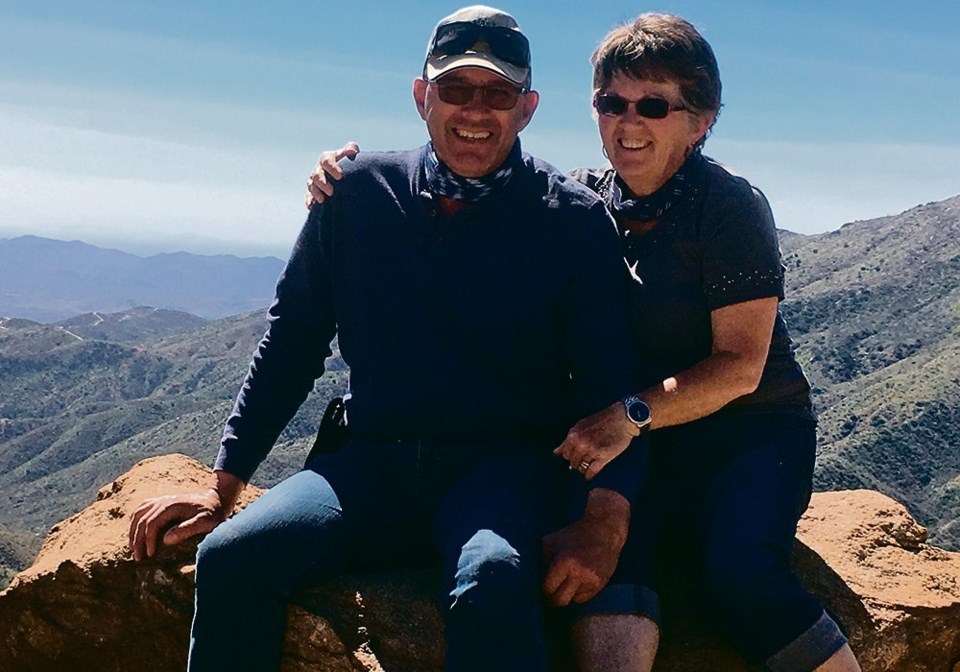OUTLOOK — Driving on an interstate highway in Idaho heading to Arizona, Allen and Lillian Patkau have no second thoughts about selling their ranch and retiring.
They plan on spending four days driving from Saskatchewan to Arizona at a leisurely pace.
“That is all about scenery and seeing how the real people live and not how the fast people move,” said Allen.
For the next few months, the Hanley, Sask., couple will enjoy the warm weather, stay out of the snow and not think about feeding cattle.
“There is life after feeding cows. You miss that for about a week.”
The couple wasn’t planning on selling, but arthritis made it difficult for Allen to do ranch work and an exit plan was made.
“We had a family meeting and none of the kids wanted it. When someone came along to buy it, we sold it.”
The couple sold the land and arranged for three different people to custom feed their cow/calf herd, backgrounders and grass-fed animals. Seven years later most of the animals are sold and the only animals left are 170 head of heifers С����Ƶ custom backgrounded for the winter.
In the summer they are moved to an old community pasture near their home and will be sold in the fall.
“We kept the cows to see how the transition went. I felt a little pushed out of the business because my arthritis was getting bad enough.”
It was after the ranch sold the couple started to drive south for a winter. With only a holiday trailer to live in, they wanted a warm place to park their trailer. Allen originally thought he would spend more time roping in Arizona like many other Canadians.
A friend convinced him to buy an ATV instead.
“An ATV quits eating when you turn it off. I rather enjoyed that. I still ATV a lot down there.”
In the 1980s, with low grain prices and marginal land in central Saskatchewan, the family shifted from a mixed farm to livestock. Over the years, the Patkaus adopted intensive grazing and a holistic management plan to improve their grassland and increase its livestock carrying capacity.
“We were at the beginning in Saskatchewan in taking care of air, land and water. We fenced out the riparian areas and grazed them when they were dry.”
In 2013, their Sandy Arrow Ranch was awarded the Saskatchewan and Canada Environmental Stewardship Award.
Throughout the years, the family travelled, including volunteer work in Nicaragua fixing water wells. The couple now live on an acreage they built where they garden, ride horses, work with cattle and take odd jobs.
For the past two years, Allen has operated the mower for the local rural municipality.
“I replaced the chores with other stuff.”
Lillian said retirement hasn’t changed her life much.
“I always think the wife and mother keep on doing what the wife and mother always did. I still garden and spend a little more time with our grandkids. I do a bit more sewing than I used to do and I tag along with Allen,” she said.
“I make blankets. It is a little bit where my practical side comes out. I don’t always do as much as I like because I don’t want to make blankets just to roll up and put in the closet. There is always something that piques your interest that you want to do.”
While the couple are still busy, their lives are less structured and generally a little more relaxed. They spend time with their grandchildren, plan on doing more travelling and help out neighbours who need assistance moving cattle and help their daughter and son-in-law on their ranch.
“There is no set pattern. There is very little set pattern to our life. Life is a journey, not a destination and I am going to have fun with it.”




